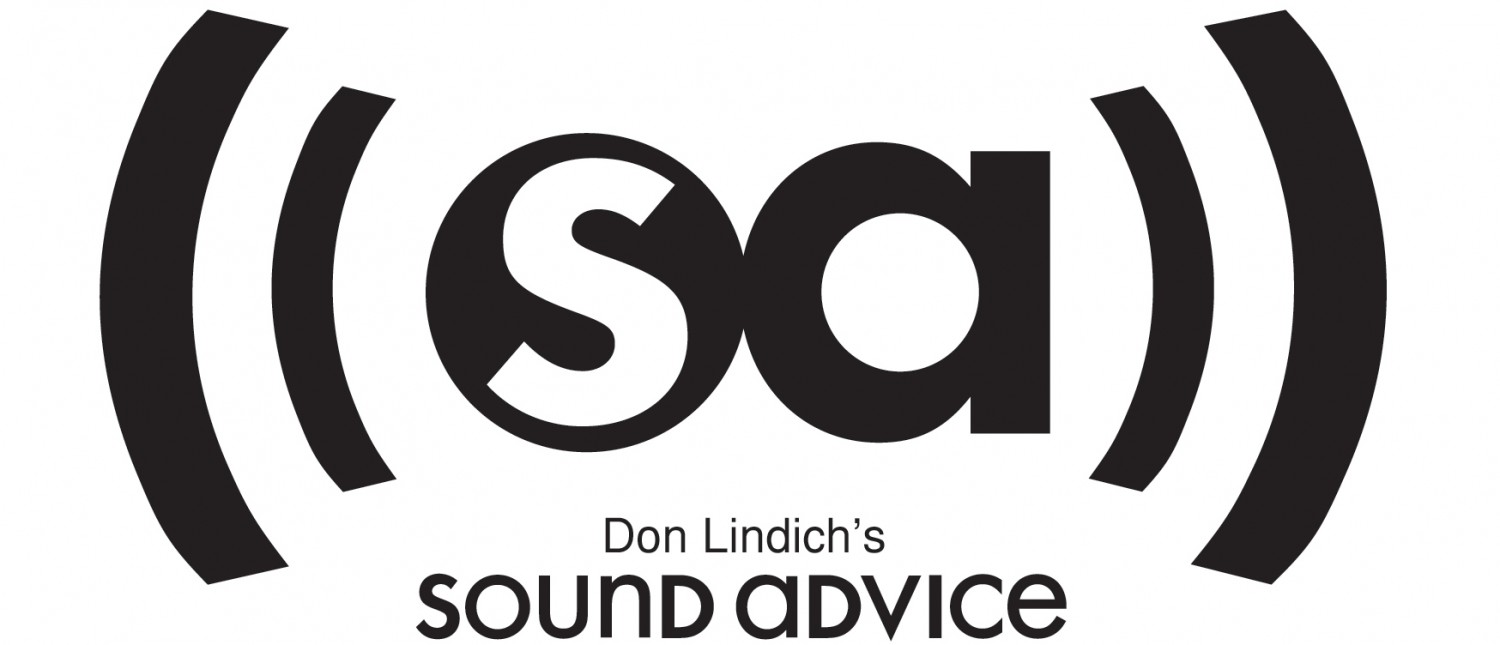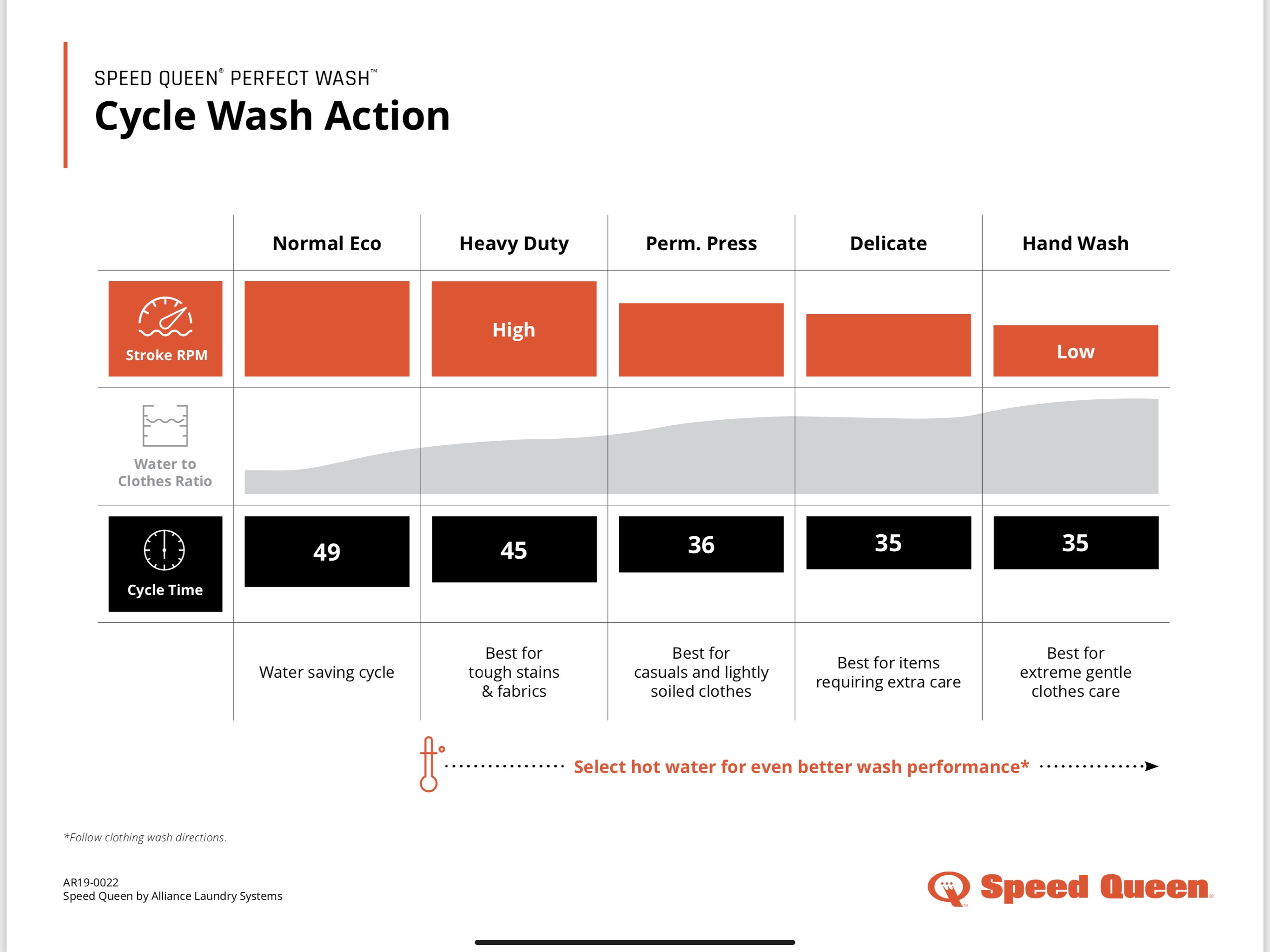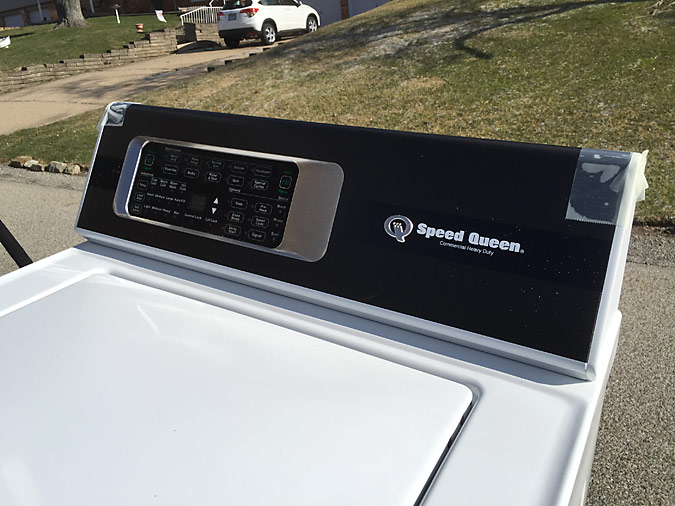
If you read my first column where I mentioned Speed Queen, you will see we have had Speed Queen laundry equipment in my family for decades. When I bought my new home, I quickly faced purchasing my first new washer and choosing one was proving quite difficult. Front loaders seemed like they involved a bit more attention and upkeep than I wanted to give an appliance, and the wash action of the “High Efficiency Top Loader” was laughable. All they did was slap the clothes around in a veritable puddle of water, and they often do not even get the clothes completely wet. It was only when I happened to accidentally lean on a Speed Queen machine that my search ended. You can read that original column at the link below.
Sound Advice Week 52, 2017: Speed Queen Washers and Dryers
As a card-carrying member of the Speed Queen cult, when the new machines came out to mixed reviews I was afraid my enthusiasm for the brand and its products would wane, and I might have to look elsewhere if I ever needed to buy a new washer. Now that I have actually used the machine myself and experienced what great results it is capable of, consider my cult membership renewed.
New design, new wash action
The new design combines some of the best features of top loading and front loading machines. You get the full tub wash and rinse and no-fuss, low maintenance operation of a top loader, and the energy efficiency and gentler fabric handling of a top loader. You can save water with the new machines as well by using the Eco Cycles, but I suggest you avoid those cycles and use a bit more water to guarantee yourself a good wash. More on that later.
Click on the graph for a full-sized image
The old machines with transmissions and mechanical timers would not pass the new government standards for energy and water usage, hence the new design. An inverter motor (as used in a front loader) rotates the drum and agitator through a series of strokes to force water and detergent through the clothes, rather than beat them with the agitator. The water used, number of strokes, length (rotation) of the strokes, speed of the strokes, frequency of the strokes and the wash time are determined according to the cycle selected. While the Eco Cycles pass the government standards, the others do not. As you may guess, the non-Eco cycles are the most effective ones, and they are the ones I recommend you use if you purchase a new Speed Queen washer. No matter the cycle, you do get a full tub wash and you can elect for a full tub rinse as well. You even have a warm rinse option on the TR7. The Eco Cycle uses a spray rinse which can be quite effective, but I have heard from readers who have allergies and must have a full tub rinse to ensure all the detergent is removed from the clothes. If that is you, this is your machine.
After the new machines were first released, Speed Queen took user feedback and after combining it with their own testing, they tweaked the operation of the various cycles to make them more effective. My father’s machine was a relatively early production model, delivered within the first 6 months of 2018. If you buy one today you will get the updated cycle action and even better performance than I experienced.
Long warranties are standard
One thing that sets Speed Queen apart is the long warranties. The warranties for the washing machines are as follows:
TR3 = 3 years
TR5 = 5 years
TR7 = 7 years
It shows the manufacturer’s confidence in the product, as well as give the consumer piece of mind. Though Speed Queen is a premium-priced product, if you take a washer from a big-box store and add an extended warranty you will start getting close to Speed Queen prices.
Dad’s new Speed Queen TR7
There have been numerous reviews of the new Speed Queen washers, notably some from the media which were quite critical when the machines were first introduced, and others very positive, which came mostly from people who owned the machines. Most of the critical reviews focus on things like how the washer does cleaning test strips or ketchup-stained white towels. While these may provide standardization for comparison (test strips) or make an interesting academic study (ketchup rubbed into a white towel) I think what most people are interested in is how a washing machine cleans their clothes. Cleaning clothes day-to-day is what this review is about.
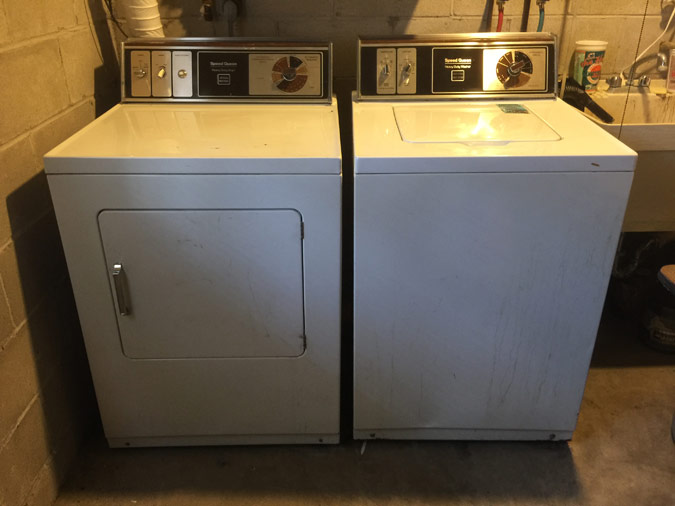
When my Dad’s old Speed Queen washer finally gave up after over 30 years of service (it was the transmission, and beyond repair) he opted for a new Speed Queen TR7 and matching dryer. I did inform him of some of the negative reviews and he dismissed it, saying, “a big company like that would not make something that can’t clean clothes.” I pretty much got his point.
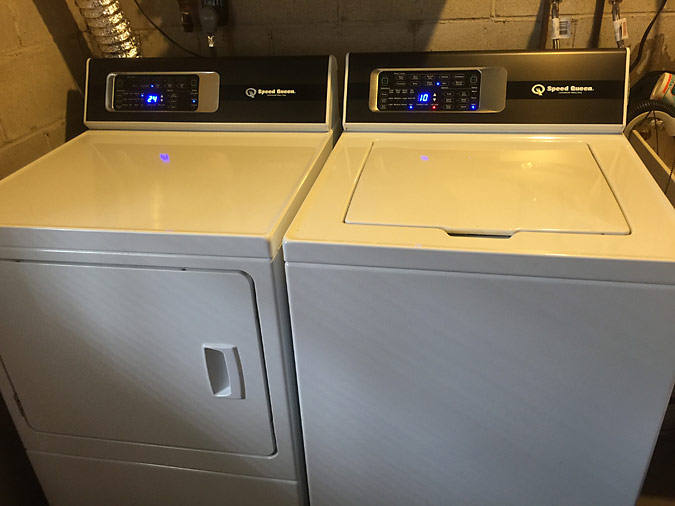
Dad loves his new washer, finding the results to be superior to his old Speed Queen. He noticed it was much gentler on the fabrics, a deduction he made himself without having read anything about the touted wash action that is gentler on clothing. It is about the quietest washing machine we have ever experienced and his clothes do look wonderful. He’s a very neat person (it probably comes with being a Marine veteran) and his clothes never showed a wrinkle to begin with. With the TR7, his garments seem to look even better still and his appearance is somehow a little neater. Though he is retired and not especially hard on clothes, he is still quite active and he loves doing yard work.
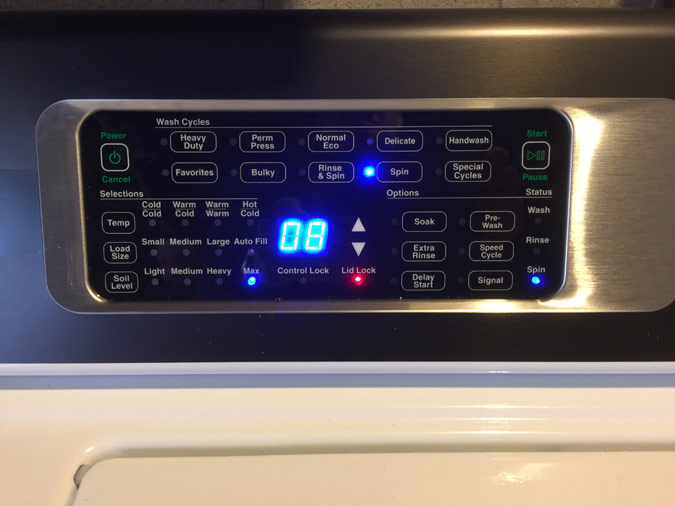
If you deal with heavily soiled garments on a regular basis, with the TR7 you have access to a Heavy Duty Cycle and several Special Cycles, such as a Denim cycle and a Heavily Soiled cycle. You do not have as many options with the dial-controlled TR3 and TR5. If you are cleaning clothes for a construction worker, mechanic or a farmhand you want to make sure you use these cycles. A dealer named Kirk Rivas cleaned some very muddy jeans with a TR7, and he posted the video on YouTube. The video is linked below. You might want to fast forward through the various cycles once you have seen how they operate, to get to the end to see how well it did. If you like to watch washing machines spin clothes in a tub, then you have over an hour of enjoyment waiting for you.
Kirk Rivas Speed Queen TR7 muddy jeans test
As you can see, the muddy jeans came out great.
Four loads of laundry and a muddy white towel
Before I toured the Alliance Laundry Systems factory I decided to put the TR7 through its paces myself and see how I liked it. I guess you could call it my homework. I brought over four loads of laundry and washed them in the TR7. All came perfectly clean with no fuss or re-washing, and I especially liked the Denim cycle for my jeans. Despite my satisfaction I realized that though the TR7 did a great job with my everyday laundry (in fact, giving me the nicest results I have ever obtained personally) I had not really challenged it with something that would be difficult for ANY washing machine to get clean. I felt like that was something I should do as part of this review, and wondered what I could use as a test subject. It turns out that it was sitting at my feet the whole time.
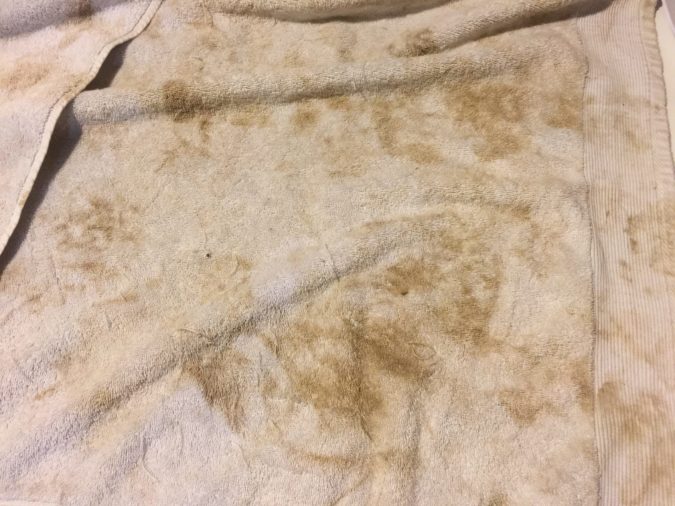
The towel you see above spent most of the winter folded by the door leading to my porch. I used it to wipe my dog Beni’s feet when he came in after running outside. This past winter we had a lot of snow days that were followed by an immediate thaw, leading to soft, muddy ground in the yard. When it was time for him to come in I would bring him in and clean and dry his feet with the towel. What you see is about 3 months worth of feet wiping, and it looks like this on both sides of the towel. It was an old towel and I was going to just throw it away at the end of winter, but when I was wiping his feet one evening I realized I had inadvertently created my own torture-test subject. I washed the towel with a bunch of other bath towels using a hot wash/cold rinse and the Heavily Soiled cycle, using (now discontinued) Persil Power Pearls detergent.
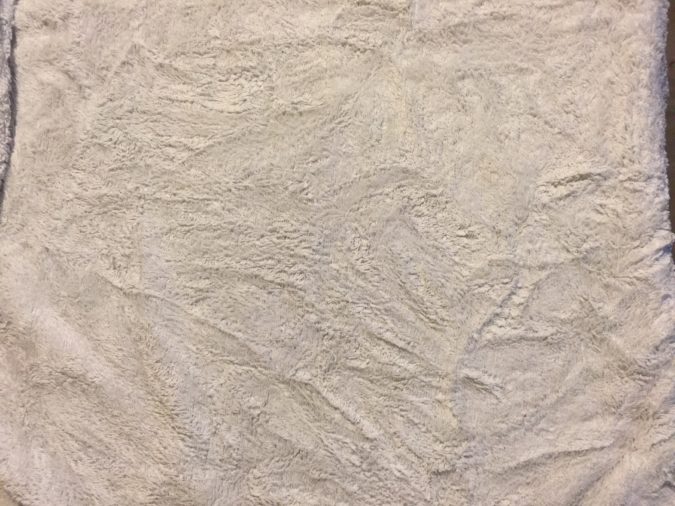
I thought that the towel was beyond redemption, but the TR7 got it clean in one wash. This is how it looked right out of the washer. You can see evidence of the TR7’s gentle fabric handling here. When I take towels out of my previous generation Speed Queen, they are pretty wrinkled and it takes a little bit of effort to untangle and unkink them before I throw them in the dryer. That is not the case here.
This is how the towel looked right after it came out of the dryer. If you click the picture the full-sized image will be displayed. You can see what a really nice job the washer did getting the mud out, some of which had been in there for a couple of months. I figured that dirt had become part of the fabric by this point, but the TR7 got it clean. The downside was a long cycle time of 85 minutes. My old-tech Speed Queen would have done it in less than 30 minutes. Some of that extra time would have been made up with fast drying, given the faster spin of the TR7, though I imagine it would still have been a significantly longer total time from start to finish. The important to me was that after this demonstration, I knew I would have no problem trusting the TR7 to clean just about anything.
It appears to me that the key to success with these machines is to read the instructions thoroughly, make sure you use the optimal cycle, avoid the Eco cycles, try and fill the machine with laundry as all washing machines work best when fully loaded, use Auto Fill, and use good detergent. The importance of good detergent cannot be overstated, as some cheap detergents are little better than washing the clothes in water alone. I use Tide powder and Persil and have always been happy with the results.
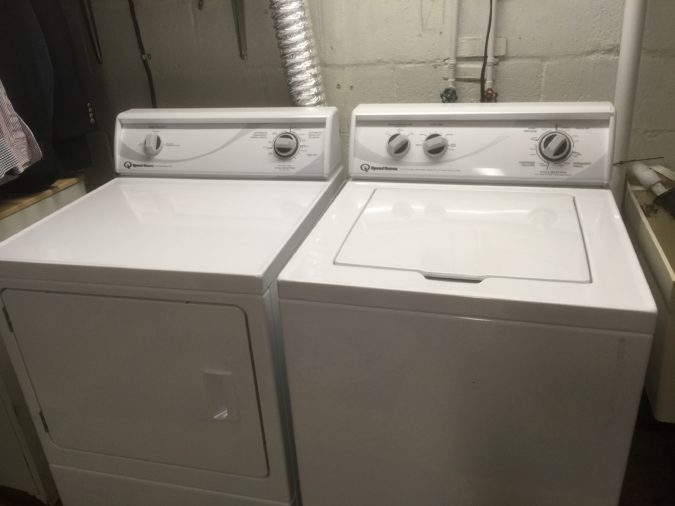
New tech or old tech?
I reflected on my own AWN432 Speed Queen washer, the last generation that used a mechanical timer, a transmission and a traditional agitator, and the TR7, with its newfangled wash action, precise digital controls and many cycles. Which machine would I rather have given a choice, and would I trade my current Speed Queen for a TR7? I did not have to think for more than a moment before deciding I prefer the TR7. It may come across as heresy to Speed Queen purists, but it was an immediate gut reaction and I am confident the TR7 would suit my needs and lifestyle better. I believe the old machine and its powerful agitation are probably better for heavily soiled items, and an older machine will get heavily soiled loads done faster than a TR7. But for everything else, I prefer the TR7. The gentle handling of the fabrics means my clothes will look better and last longer, and the Auto Fill combined with all the specialized programs eliminate guesswork and make it easy to get great results no matter what you are washing.
While I prefer the TR7 and the matching digitally-controlled dryer, it is unlikely I will ever own them because my current Speed Queen washer is barely 6 years old and probably has 19 years left in, maybe more given it is only doing laundry for one. Think about that. Many current washing machines only last for 6 years or so, and at 6 years, mine is just getting broken in.
Which Speed Queen washer should I buy, the TR3, TR5, or TR7?
At the time of publication the TR3 is $899, the TR5 is $999, and the TR7 is $1,099. Comparing the TR3 to the TR7, an extra $200 for the TR7 gets you the precision and customizable options of the digital controls, as well as all the additional cycles. That alone is definitely worth it, and after using the digital controls myself I consider them a must-have. When you factor in the extra 4 years of warranty you get with the TR7, it truly becomes a no-brainer, at least for me. The people at Alliance say the models with digital controls are their most reliable, built to laundromat standards and sealed to keep moisture out. That is one of the reasons the warranty is longer. This is one time that the digital controller is an asset for reliability and longevity, rather than a liability.
If you are tired of throwaway appliances that need replaced every 3 to 6 years and can’t bring yourself to spend over $1,000 on a washer, the TR3 and TR5 are good options. Given your new machine is likely to last over 20 years though, I think the extra $100-$200 for the TR7 is money well spent.
Interested in a Speed Queen for yourself? Find your local Speed Queen retailer
